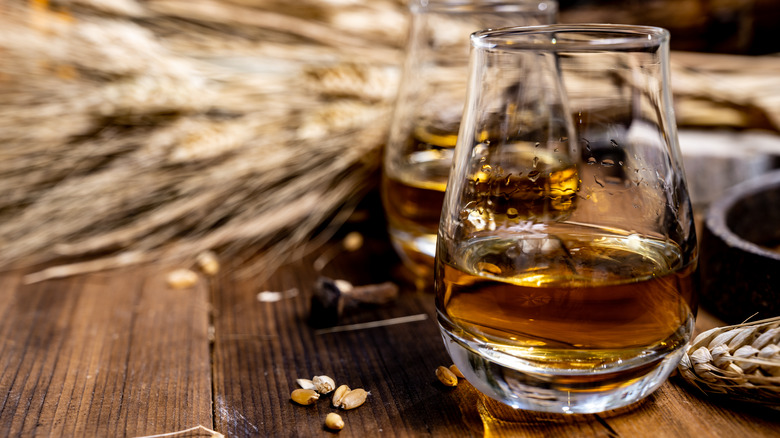The Reason You Need To Let Whiskey Breathe
Even if you're not exactly a wine snob, chances are you've heard that some wines need to breathe. While that's certainly true, you might not have known that it isn't the only kind of alcoholic drink that benefits from being aerated before enjoying. In fact, whiskey may be one such drink. Some argue that allowing whiskey to breathe makes a difference. In fact, you could even find, at one time, an aerator for spirits on the market (though the manufacturer has since discontinued making the tool, which may say something, too).
According to Drinkhacker, who conducted a taste test experiment of whiskey that was allowed to sit for three different lengths of time, aerating whiskey isn't as significant as one might think — especially if you're coming from a wine perspective. However, giving the spirit some time to air out does seem to allow for it to open up and bloom in the glass, having an effect on both the nose and palate.
If you wish to give this a try, it's fortunately quite easy to do; there's even an equation of sorts to do so.
This is how you can aerate whiskey
Paul S. Hughes, the author of "The Science and Commerce of Whisky," explained that whiskey with an ABV (alcohol by volume) over 17% will have an uneven distribution of alcohol molecules within the bottle and therefore inside the pour initially (via The Dapper Savage). But when you give the pour of whiskey a chance to breathe, it allows the alcohol molecules within the glass to become more evenly distributed. This does take a bit of time, though.
In order for the full profile and featured notes to realize their potential before taking your first sip, you could try letting the whiskey sit for one minute for each year the whiskey was aged. Keep in mind that whiskey does not continue to age after it has been bottled. So, a dram of 12-year whiskey would require 12 minutes to breathe before taking a first sip.
Note that in Drinkhacker's test, the whiskey was tried after sitting for no time, five minutes, and then 10 minutes — with the whiskey's taste remaining "surprisingly consistent." So, again, it's debatable whether whiskey needs to breath or not (and for how long) — and certainly it doesn't require aeration to the same extent as wine — but it can make a difference on the notes and overall experience to make it worth a try.

